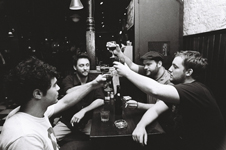 When
you open your copy of the River
Cities' Reader to see
what's being offered in the way of live entertainment, you might
come to the conclusion the Quad Cities has little to provide in the
way of indie rock.
When
you open your copy of the River
Cities' Reader to see
what's being offered in the way of live entertainment, you might
come to the conclusion the Quad Cities has little to provide in the
way of indie rock.
But a spate of nationally recognized acts that came through the Quad Cities last year prove the vitality of the local alternative-rock scene. Wilderness, Two Gallants, Hockey Night, and The M's played here, for example, and it's hard to imagine that promoters would have booked these groups if it weren't for the local bands that built a loyal fan base for this type of music.

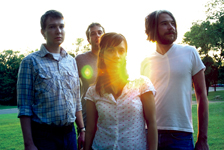 The
Winter Blanket has undergone dramatic changes in its six-year career,
and the evidence is Golden Sun,
a transitional EP that could prove as important to the band's
direction as "Good Vibrations" was to the Beach Boys.
The
Winter Blanket has undergone dramatic changes in its six-year career,
and the evidence is Golden Sun,
a transitional EP that could prove as important to the band's
direction as "Good Vibrations" was to the Beach Boys.
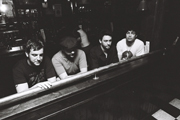 On
the cover of the Death Ships' Seeds
of Devastation, a
resplendent Midwestern farm scene - complete with stalks of wheat,
a dragonfly, and a red barn - sets the tone. But on the inside
panel, as the barn burns down behind him, a boy in a blue winter coat
pokes a white paper boat with a stick.
On
the cover of the Death Ships' Seeds
of Devastation, a
resplendent Midwestern farm scene - complete with stalks of wheat,
a dragonfly, and a red barn - sets the tone. But on the inside
panel, as the barn burns down behind him, a boy in a blue winter coat
pokes a white paper boat with a stick.
 Sallow
red roses adorn the withered remains of a small crow on the cover of
Song of the Blackbird.
The image of the crow is carried throughout the album and serves as
an apt metaphor for the turmoil in Whitmore's songs. A magnificent
bird with gleaming black feathers and supple curves, the crow's
shrill cry seems to contradict its splendor.
Sallow
red roses adorn the withered remains of a small crow on the cover of
Song of the Blackbird.
The image of the crow is carried throughout the album and serves as
an apt metaphor for the turmoil in Whitmore's songs. A magnificent
bird with gleaming black feathers and supple curves, the crow's
shrill cry seems to contradict its splendor.
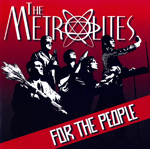 The
Metrolites' For the People
draws inspiration from a wide range of music composed during the
1950s and '60s - a time when America was obsessed with space
travel, the atomic bomb, and especially the motion picture.
The
Metrolites' For the People
draws inspiration from a wide range of music composed during the
1950s and '60s - a time when America was obsessed with space
travel, the atomic bomb, and especially the motion picture.
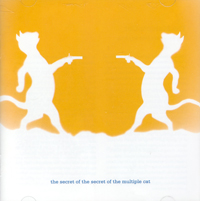 During
the mid- to late '90s, Pat Stolley's band The Multiple Cat
released four albums, a multitude of singles, and a remix album. The
Secret of the Secret of the Multiple Cat is a retrospective that
makes use of songs from that period.
During
the mid- to late '90s, Pat Stolley's band The Multiple Cat
released four albums, a multitude of singles, and a remix album. The
Secret of the Secret of the Multiple Cat is a retrospective that
makes use of songs from that period.








